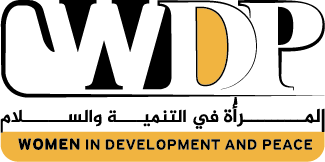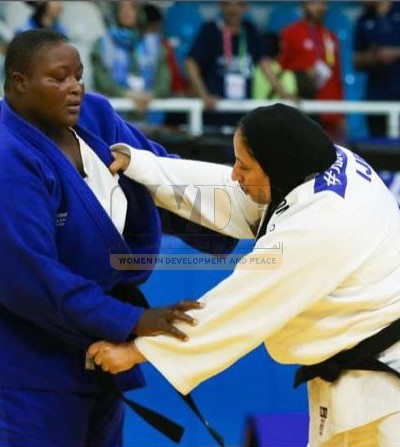Haneen Al-Wahsh – Women in Development and Peace
For several years now, a heroic scene has been etched in the mind of the writer of this report: a young woman in her twenties was about to be assaulted by a young man who was behaving indecently and lacking in good taste. He wouldn’t stop following her through the corridors of a public park, preceding his steps with abusive language before she even turned to look at him with a defiant and warning glance. The young man approached her further, crossing the boundaries of decency; she immediately grabbed him by the collar of his shirt, and with a swift movement threw him to the ground, leaning on her leg. Then, without looking back, she continued on her way with calm steps and an angry expression.
I approached the young woman and gave her my phone number, telling her that I was willing to testify to the police if necessary, and I accompanied her to the outer gate while we exchanged words.
The young woman’s name is Sara Muhammad (a pseudonym). She told me that she had been training since childhood at a martial arts institute in Sana’a and specialized in “Kung Fu,” and that this skill had always provided her with the protection she needed to deal with these situations. She said to me quickly: “Perhaps young men think that a girl who pays attention to the details of her appearance and walks with her face uncovered is an easy target, and is looking for someone to be attracted to her, while they need to be taught a harsh lesson in decency.”
The Beginning
The discussion began about the necessity for women to learn self-defense skills at an early age; its origins can be traced back to the early 20th century with the emergence of what was then called the “Latson Style” of self-defense for women, developed by American “William Latson” in 1906.
Historical sources trace the interest in women’s sports in Yemen to the period following independence in 1967 when some women’s teams were established in various sports. However, official records do not keep any specific date for the start of women’s combat sports in Yemen.
For decades, sports in Yemen remained exclusive to men, especially in the public sector, and the private sector’s tendency to establish women’s sports clubs came later.
Athlete Hiba Yasin says: “I was the first Judo player in Yemen; I joined the sport in 1999, before becoming a member of the Yemeni Judo Federation. However, since then, I haven’t noticed any change in society’s view of a girl who practices these sports.”
Hiba points out that her joining Judo was for the sport itself, as nourishment for the soul, mind, and body, and the best way to boost self-confidence. She emphasizes that self-defense under any circumstances is among other reasons that encouraged girls to take up sports and train in games and martial arts.
Misconceptions and Misguided Restrictions
The results of the field survey we conducted confirm that societal reservations, restrictions, and the misunderstanding of sports as a function and skill, as well as keeping it exclusive to boys, is what has limited the development of women’s sports in Yemen, keeping it at its lowest levels, despite the global awards that female athletes have won every time they get the chance to participate.
Khalid Al-Nawari, Secretary-General of the Yemeni Association for Sports Media, says: “Advancing women’s sports in Yemen requires a corrective revolution of the negative concepts that restrict women’s participation, despite their possession of high capabilities that have surpassed men in the sports sector, whether as athletes, administrators, or technicians.” He affirms that experiences prove women’s superiority over men in various sports such as judo, table tennis, and fencing and that women’s presence is currently growing rapidly.
He adds: “The Yemeni Association for Sports Media has given women great opportunities to join sports media work, with the number of female members reaching 60 sports media professionals who practice the profession of media. This represents noticeable progress compared to previous years when women’s presence in sports media did not exceed a few.”
Neglect and Lack of Facilities
Laila Murad began her sports activity from home before joining a local club as a trainee, then becoming a coach, eventually ending up in a private hall to practice volleyball. With the entry of the conflict into its first year, the sports sector in general suffered complete paralysis, and with it, the sports clubs in Taiz governorate stopped opening their doors.
The paralysis that afflicted the women’s sports sector, even though it was a private sector, prompted Laila Murad to return home, where her interest in sports declined from what it had been, and she began to engage in other urgent preoccupations, such as her family’s need for food after her father’s educational sector salary was cut off.
Laila’s story indicates that the absence of official support for women’s sports makes the self-start of this sector more likely to fade quickly. What begins with family support often ends within the circle of family needs. This is confirmed by the results of a survey of female athletes, with 99% of them stating that they did not receive any government support, and their sporting presence is limited to the support provided by their families.
For her part, Hiba Yasin says: “The armed conflict has destroyed the simple and emerging infrastructure for the women’s sports sector, including the destruction of some sports halls and the lack of equipment designated for training in others.” She affirms that the Women’s Sports Union has limited its activities after the armed conflict to providing support related to participation in external tournaments, albeit in a more limited manner than the previous reality.
She places the reactivation of union branches in the governorates at the forefront of possible solutions and treatments, to create a sports culture among women and society. Yasin also stresses the need to provide equipped sports halls with equipment, and technical and financial support.
Starting from Schools
Hiba Yasin believes it is of utmost importance to launch awareness campaigns in schools about the importance of sports in general for girls and martial arts in enhancing protection.
Although several sources indicate that women’s sports began as a school activity, its presence has recently declined rapidly, according to the affirmation of Marwa Al-Areeqi, activities teacher in one of the girls’ schools.
Marwa agrees with Hiba Yasin’s point regarding the need to educate schoolgirls about sports. Still, she suggests establishing sports halls in girls’ schools, considering it the most successful way to activate the women’s sports sector in Yemen.
International Success
The sports memory in Yemen retains a considerable number of female athletes who have achieved great success at the local and international levels, thus transcending the bounds of oppression consecrated by misguided traditions, despite the absence of any religious legislation prohibiting women from exercising their right to sports.
Khalid Al-Nawari cites some successful female athletes, including Nada Al-Ahdal, a Yemeni fencer who has been able to participate in more than one local and international competition, the latest of which was her participation in the 19th Asian Games held by China at the end of 2023, considered the largest edition in the history of the Asian Games. Several Yemeni female athletes participated in the 19th edition of the Asian Games, including judo player Arwa Al-Yas and Samah Al-Shami among the fencing team players.
Women’s practice of martial arts has always sparked widespread debate in Yemeni society, with opinions ranging from supporters to opponents. Some believe that these sports rob women of their femininity and imbue them with masculine qualities, while others believe that they enhance their self-confidence and equip them with important self-defense skills.

